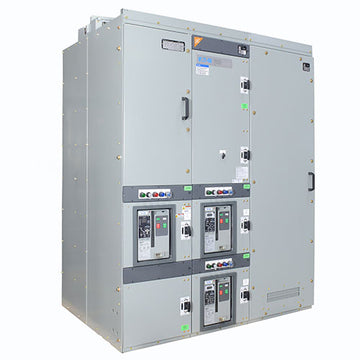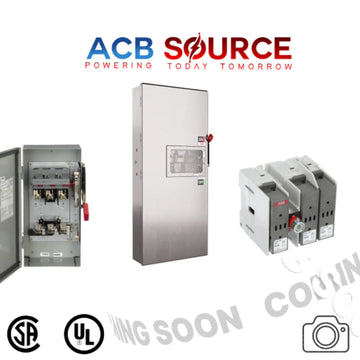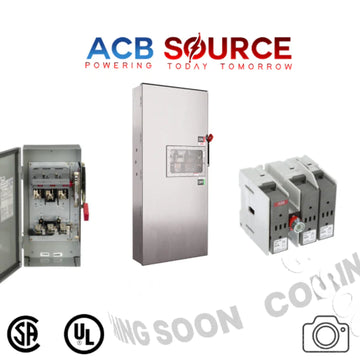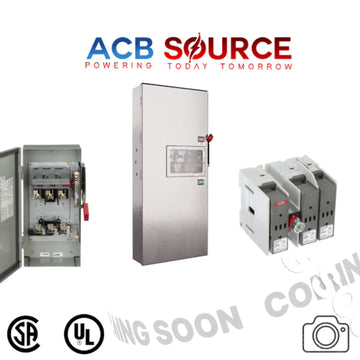In the intricate realm of electrical systems, terms like switchgear and switchboards are often used interchangeably, leading to confusion. However, these components serve distinct purposes and play different roles in ensuring the efficient and safe distribution of electricity. This article aims to decode the differences between switchgear and switchboards, shedding light on their unique functions, components, and applications.
I. Understanding Switchgear
Switchgear is a broad term encompassing a range of electrical equipment designed to control, protect, and isolate electrical equipment in power systems. It acts as a centralized hub for managing the flow of electricity, ensuring safety and reliability. The key components of switchgear include circuit breakers, fuses, relays, and disconnect switches.
a. Circuit Breakers: These are crucial components within switchgear that interrupt the flow of electrical current during abnormal conditions, such as short circuits or overloads. They play a pivotal role in protecting the electrical system from damage.
b. Fuses: Similar to circuit breakers, fuses are protective devices designed to interrupt the electrical current in the event of a fault. They provide a sacrificial element that melts when excessive current flows through, preventing damage to the rest of the system.
c. Relays: Relays in switchgear are devices that monitor electrical parameters and initiate actions, such as opening or closing circuits, based on predefined conditions. They enhance the automation and protection capabilities of the electrical system.
II. Unveiling the Role of Switchboards
Switchboards, on the other hand, are specific types of switchgear that focus on the distribution of electrical power within a facility. Unlike switchgear, which is more comprehensive and can be used in various applications, switchboards are tailored for use in low and medium-voltage applications within buildings or industrial facilities.
a. Busbars: A key component of switchboards, busbars are conductive bars that distribute electrical power to various circuits. They act as the central pathways for electricity, ensuring a smooth and organized distribution within the facility.
b. Circuit Breakers and Switches: Switchboards house circuit breakers and switches to control the distribution of power to different areas or equipment within a facility. These components work together to provide a flexible and efficient way of managing electrical loads.
c. Meters and Instruments: Switchboards often incorporate meters and instruments to monitor electrical parameters such as voltage, current, and power consumption. This data is essential for managing and optimizing the electrical system.
III. Key Differences Between Switchgear and Switchboards
Now that we have a basic understanding of both switchgear and switchboards, let's delve into the key differences:
a. Scope of Application: Switchgear is a broad term that includes various types of equipment used for power control and protection in different applications, including power plants and substations. Switchboards, on the other hand, are specific to the distribution of power within buildings or industrial facilities.
b. Components: Switchgear includes a wider range of components such as relays, disconnect switches, and fuses, while switchboards primarily focus on circuit breakers, switches, busbars, and meters.
c. Voltage Levels: Switchgear is designed to handle a wide range of voltage levels, from low to high. Switchboards, however, are typically used in low and medium-voltage applications.
IV. Optimizing Electrical Systems with the Right Choice
Choosing between switchgear and switchboards depends on the specific requirements of the electrical system. For large-scale power distribution networks, switchgear provides the comprehensive protection and control needed. In contrast, switchboards are ideal for managing power distribution within buildings or facilities where the emphasis is on efficient local control.
a. Optimizing Safety: The right choice between switchgear and switchboards contributes to the overall safety of the electrical system. Properly selected and installed components ensure the protection of equipment and personnel.
b. Efficient Power Distribution: Switchboards, with their focus on local power distribution, contribute to efficient energy management within a facility. This allows for better control and optimization of power usage.
c. Scalability: Switchgear is often modular and scalable, making it suitable for adapting to the changing needs of a power system. Switchboards offer flexibility within the confines of a specific facility, allowing for adjustments to accommodate evolving requirements.
V. Conclusion: Decoding the Electrical Lingo
In conclusion, understanding the distinctions between switchgear and switchboards is crucial for optimizing electrical systems. While switchgear serves a broader purpose in power control and protection, switchboards specialize in the efficient distribution of electricity within buildings and industrial facilities. By choosing the right components based on the specific needs of a system, engineers and facility managers can ensure the reliability, safety, and efficiency of their electrical infrastructure. Decoding the electrical lingo empowers decision-makers to make informed choices, leading to optimized electrical systems tailored to meet the demands of diverse applications.







